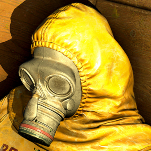Adr1ft: Satellite Flight

I love space, but I don’t like games about space. Most of them, in an attempt to capture the enormity of the place, take the grand view—real-time and turn-based strategy games have you managing entire colonies, armies or peoples. Others have you piloting a single spaceship or some sort of giant machine, cruising at light speed towards clear, marked objectives. They give you purpose and make you feel big, and by comparison make space seem like just another locale.
Planting you into the shoes of a single astronaut, Adri1ft makes you feel small. About an hour into the game, I had to make my first big jump, from one part of the wreckage of the space station Northstar IV to another. Before then, I’d always “technically” been in space, since the Northstar had been torn apart and was little more than a sea of debris. But I hadn’t felt it. The jumps I made between the station’s pieces were short, and I could always see the oxygen canisters on the other side. But an hour in, I finally had to make a jump far enough that I couldn’t see what was on the other side. It was the first time I’d truly be in space.
Halfway through my jump, I decided to let go of my thruster and drift the rest of the way there. Without having to worry about managing my position, I finally had time to look around and look at the Earth below. It was nighttime on my side of the planet, but I could make out where the big cities were by the density of their lights. So I just sat there, staring at that model of our planet. As I drifted toward the end of the jump, I had to snap myself out of it and stick the landing.
Adr1ft earns moments like that one because it nails the feeling of weightlessness. Or at least, the scenes in space flicks where someone’s drifting in the ether, and all the little thrusters on their suit fire off rapidly in different directions to stabilize them. In Adr1ft, your fingers on the keyboard work those thrusters (it’s not as satisfying on a controller), and you’ll probably dance them around whenever you wind up in a corner and struggle to get yourself out of it. Sometimes, like during that big jump, it’s better to fly in a direction, let go, and adjust as you see fit. And when you let go and just float, you can take a breather and marvel at the wonders of space from a perspective you typically don’t get to see.
More than that, it replicates the film version of how astronauts operate. That powerful feeling of workmanlike calm astronauts must learn in order to do what they do in the face of catastrophe maps perfectly to a videogame. That feeling that everything is going to be just fine once you fix this little kink that’s popped up, even when it’s a potentially fatal one. Even as my vision occasionally faded to black and white as I ran out of oxygen, I didn’t falter knowing the next oxygen canister had to be close by. I approached the next air-compressed door, and the same door-opening animation played without any additional urgency. The canister was right on the other side of the door, I injected it into my suit the way I always did, and everything was fine again. I’ve never been to space so I can’t say how the experience compares to real astronauting, but it feels authentic.
-

-

-

-

-

-

-

-

-

-

-

-

-

-

-

-

-

-

-

-

-

-

-

-

-

-

-

-

-

-

-

-

-

-

-

-

-

-

-

-








































